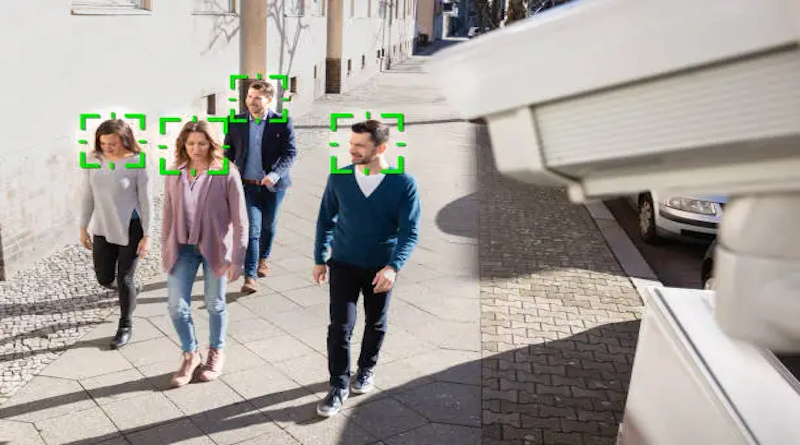Enhancing Defense Systems: AI-Based Civilian Detection
Table of Contents
Introduction
In the modern era of warfare and national security, the need to distinguish between combatants and civilians in conflict zones has become increasingly critical. The challenge lies in minimizing harm to innocent civilians while effectively identifying potential threats. In response to this dilemma, defense organizations around the world are turning to advanced technologies, particularly artificial intelligence (AI), to develop innovative civilian detection techniques that aid military operations while prioritizing human safety and minimizing collateral damage.
The Role of AI in Civilian Detection
Artificial intelligence has rapidly evolved over the past few years, offering remarkable capabilities in image recognition, data analysis, and pattern identification. When integrated into defense systems, AI can significantly enhance the accuracy and efficiency of civilian detection, thereby reducing unintended casualties and improving mission success rates. Unlike traditional methods that heavily rely on manual interpretation, AI-based techniques leverage machine learning algorithms to autonomously identify and distinguish between civilians and combatants, leading to more informed decision-making on the battlefield.
Key Components of AI-Based Civilian Detection
Advanced Surveillance Systems:
AI-equipped surveillance systems employ cameras, sensors, and drones to monitor conflict areas in real-time. These systems use computer vision algorithms to analyze visual data and identify human features, movements, and behavior patterns.
In 2017, the U.S. Department of Defense initiated Project Maven, which aimed to leverage AI and machine learning to improve the analysis of large volumes of video data collected by drones. One specific application involved the use of AI-based object detection to identify potential threats and civilian activities in real-time. By training AI algorithms to recognize objects and behaviors indicative of combatants or civilians, Project Maven demonstrated how AI-powered drone surveillance could enhance situational awareness and reduce the risk of harm to innocent civilians.
Data Fusion and Analysis:
During the Syrian conflict, AI-based techniques were employed to analyze satellite imagery and identify makeshift refugee camps. By analyzing changes in terrain, patterns of movement, and signs of human activity, AI algorithms were able to locate and monitor areas where civilians sought refuge. This information proved invaluable for humanitarian organizations, enabling them to provide aid and support to displaced populations while avoiding areas of potential conflict.
Facial Recognition and Biometrics: Facial recognition technology, powered by AI, can play a crucial role in identifying known combatants and differentiating them from civilians. Biometric data, such as fingerprints and retinal scans, can also contribute to accurate identification, enhancing the precision of civilian detection efforts.
Natural Language Processing (NLP):
NLP algorithms enable defense personnel to analyze and interpret textual information from intercepted communications, social media, and other sources. By understanding context and sentiment, NLP can help assess whether a given area is predominantly civilian-populated or under potential threat.
In conflict zones like Yemen, social media plays a crucial role in providing real-time information about the situation on the ground. AI-powered natural language processing (NLP) algorithms were used to monitor social media platforms and analyze text data to identify areas of potential civilian harm. By detecting reports of airstrikes, military movements, and civilian casualties, defense organizations could better assess the situation and take necessary precautions to protect civilians.
Benefits
The implementation of AI-based civilian detection techniques in defense systems offers several significant benefits:
Enhanced Precision
AI’s ability to process vast amounts of data and identify subtle patterns leads to more accurate detection and differentiation between civilians and combatants.
Minimized Collateral Damage
By reducing the risk of misidentifications, AI-based systems help minimize unintended harm to civilians, aligning with international humanitarian laws and ethical considerations.
Real-time Decision Support: AI-equipped defense systems provide real-time insights to military personnel, enabling faster and more informed decisions during high-stress situations.
Challenges
However, there are challenges to overcome:
Ethical Concerns
The use of AI in defense raises ethical questions about privacy, surveillance, and the potential for biased decision-making.
Reliability and Robustness
AI systems require consistent and accurate training data to perform effectively. Adversarial attacks and biases in training data can impact system reliability.
Human Oversight
While AI can enhance decision-making, it should not replace human judgment. Adequate human oversight is essential to prevent unintended consequences.
Conclusion
AI-based civilian detection techniques represent a promising advancement in defense systems, holding the potential to save lives and protect innocent populations during armed conflicts. By harnessing the capabilities of artificial intelligence, defense organizations can achieve greater accuracy, improved situational awareness, and enhanced decision support, all while upholding the principles of ethical conduct and humanitarian values. As technology continues to evolve, it is crucial to strike a balance between leveraging AI’s capabilities and maintaining human responsibility in safeguarding civilian lives in times of conflict.
Read More: AI Based Traffic Watcher
